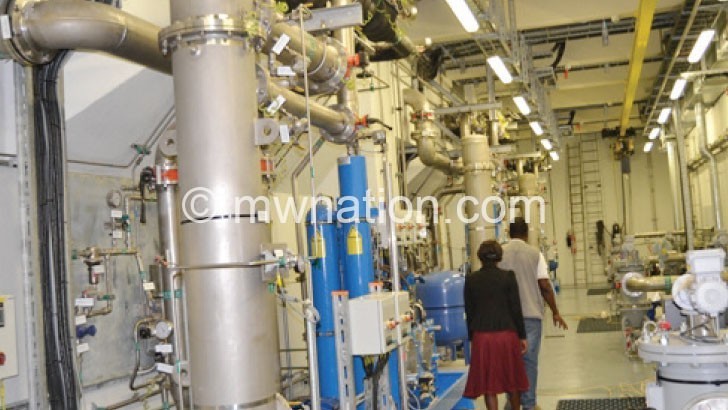Egenco takes stock of operations
Electricity Generation Company (Egenco) says it has added 58 megawatts (MW) to the national grid since its operationalisation in 2017.
This means that on average, the parastatal has been adding 19 MW to the grid since it started operating in the country following the unbundling of the vertically integrated Electricity Supply Corporation of Malawi (Escom) through the Power Sector Reform Programme (PSRP) championed by the now defunct Millennium Challenge Account-Malawi (MCA-Malawi).
Egenco power station manager for Kapichira Harry Msosa said this last week in his presentation at the 54th Southern African Power Pool (Sapp) management committee meeting in Lilongwe.

Msosa said Egenco, wholly owned by the government of Malawi and was incorporated on 9th September 2016 as a public company under the Companies Act, has managed to add the 58 MW through the installation of diesel engines, as well as the rehabilitation of both Tedzani three and Nkula A.
Nkula A hydroelectric power plant was rehabilitated, upgraded and modernised in 2018, thanks to a $350.1 million first Malawi Compact
grant, a five-year project activated in September 2013 and closed in September 2018, courtesy of the people of United States of America (USA), through the Millennium Challenge Corporation (MCC) which is a US foreign aid agency, aimed at reducing poverty through economic growth.
According to a breakdown by Msosa, 20 MW have been added from Mapanga diesel engines while 10 and six megawatts were added to the grid by Kanengo and Mzuzu diesel plants, respectively.
On one hand, the rehabilitation of Nkula A, which was first commissioned in 1966, has added 12 MW while the rehabilitation of Tedzani three has added an extra 10 MW to the national grid.
Currently, the total installed capacity is 424.824 MW with 372.1 MW from hydro while 52.72 MW is from thermal diesel.
“As Egenco, we now have a 15-year rolling Strategic Plan which runs up until 2033 and using the plan, we want to increase installed capacity to 1 687.5 MW,” said Msosa.
He said Egenco eyes to improve the current generation mix from 95 percent to 72 percent hydro based in five years.
Currently, the main source of electricity in Malawi is hydropower which generates nearly 90 percent of the power.
Minister of Natural Resources, Energy and Mining Bintony Kutsaira said last week when he presided over the Sapp conference that the country is striving to address challenges of low electricity penetration which is at 12 percent. Said Kutsaira: “We are targeting to increase the access to electricity to 30 percent by the year 2030. Through the Malawi Energy Access Project [Meap], which is being funded by the World Bank, we aim to connect 90 000 customers on a year basis. This is one of the projects that we are undertaking to increase access to electricity.”





